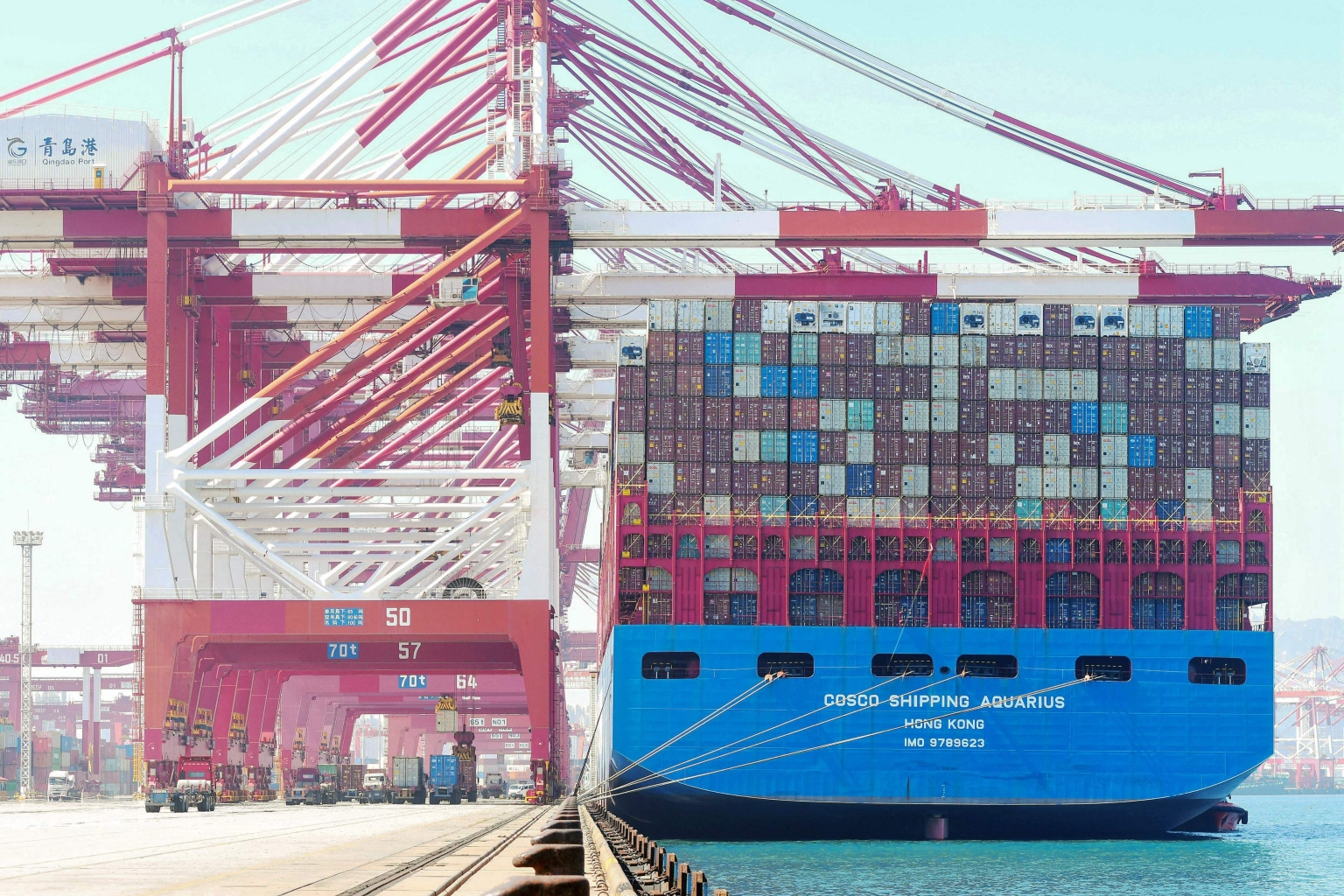Demand weakens for goods from Asia, spelling end of shipping bonanza
Sign up now: Get ST's newsletters delivered to your inbox

Economists forecast the value of Chinese exports will grow 9 per cent this year.
PHOTO: AFP
Follow topic:
SHANGHAI - The cost of shipping goods from China has slumped to the lowest level in more than two years as the world economy stumbles, dimming prospects for container carriers that turned in record profits during the pandemic.
A 40-foot shipping box from the world's largest port of Shanghai to Los Angeles fetched US$3,779 (S$5,420) last week, the first time the spot price was below US$4,000 since September 2020 and half the level of three months ago, according to shipping consultancy Drewry.
In what is typically the peak season for seaborne trade, global demand for Chinese goods is waning instead as consumers cut back spending because of inflation and the shift away from goods towards services.
Factories in Europe and the rest of Asia are also scaling back production. China's economic slowdown is also cutting into import demand, with companies in Asia and Europe seeing weaker growth or declines in orders from Chinese companies.
"It is fair to say that the demand outlook for the trans-Pacific and container shipping generally is receding quickly," said Mr Simon Heaney, a senior manager of container research at Drewry.
For the world's shipping lines, it is providing some relief to their packed sailing schedules yet threatening to slow an eye-popping run of profitability driven during the pandemic by stronger-than-normal consumer demand for household items.
"While it is more clear that the second quarter of 2022 will be an earnings peak, I think any talk of bust and return to pre-pandemic earnings levels - or lack thereof - is premature," said Mr John McCown, an industry veteran and founder of Blue Alpha Capital.
Shares of Copenhagen-based A.P. Moller-Maersk hit the lowest since March 2021 on Friday, and those of Germany's Hapag-Lloyd slumped to the lowest since June last year. Cosco Shipping Holdings, China's biggest carrier, reached a 17-month low.
It was just about two years ago that US import demand started to surge, leading to a queue of cargo ships off the coast of Southern California till 2021 that eventually reached a high of 109 in January this year. As at Friday, the line to enter the ports of Los Angeles and Long Beach had eight vessels.
US container imports are not falling off a cliff, but they are slowing down to more normal levels seen before Covid-19.
The steady fall in spot container rates is putting pressure on carriers that have been pushing to sign more long-term contracts with customers as those prices soared into early 2022. Maersk, for instance, said recently it has about 72 per cent of its long-haul volume on contracts.
Walmart, Amazon.com and Ikea were among companies that signed contracts when spot prices were at near-record levels, according to analysis firm Xeneta, but as inflation bites, importers in the United States and Europe want to ship fewer goods from Asia, it said.
Many of the carriers' customers want to renegotiate for discounts.
Agents and freight forwarders in Asia have received calls recently from cargo owners asking to lower their shipping costs, with some exporters complaining about the unfairness of paying almost twice as much on contracts than the spot market. Shipping companies want exporters to bulk up their volumes, but many are refusing to because of the weaker economic outlook.
"We polled customers and 50 per cent of them successfully negotiated for lower rates on term contracts," said Mr Peter Sand, chief analyst at Xeneta. "The drop in freight rates is due to falling demand globally, and port congestion has eased, allowing for more efficient operation of the ships."
Economists forecast that the value of Chinese exports will grow 9 per cent this year, down from the 13.5 per cent expansion in the first eight months of the year and well below the 30 per cent jump last year.
While exports rose 7.1 per cent in August from a year earlier, higher prices rather than a boost in volumes may be playing a bigger role in driving up the figures. About half of the headline export growth in July was due to price effects, according to an estimate by Macquarie Group.
Shanghai's port processed 8.4 per cent less cargo in August than a year earlier, with the numbers of containers down 3.4 per cent, the port said earlier this month. This tallies with with the drop in boxes arriving in the US - the number of containers arriving at the busiest US port of Los Angeles dropped by the most since the early days of the Covid-19 pandemic last month.
With no capacity to spare just six months ago, the container lines are now scrambling to reduce an excess to match demand. According to a Drewry report on Friday, 117 out of 744 sailings were cancelled over the next month on major trade lanes, and about 68 per cent of those blanked voyages were scheduled to do trans-Pacific eastbound trips.
The weakening outlook is coming not just from mainland China - Taiwan's exports grew at the slowest pace in more than two years in August, while South Korean exports dropped 8.7 per cent in the first 20 days of this month. BLOOMBERG

